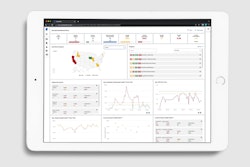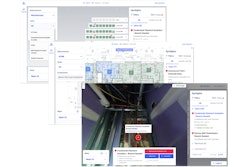Online project management has given the construction industry a more efficient method to secure and perform work. Companies seeking to differentiate themselves on negotiated projects or build repeat business with good customers are finally getting results from web-based communication systems.
Contractors who continue to forgo some form of online project management tools and continue to use a combination of paper-based and software tools may be missing out on some important features. Web-based, project management systems followed with thorough implementation help owners, architects, contractors and consultants manage their projects effectively and profitably.
These available communication/management tools make it possible to speed up the time it takes to obtain the necessary approvals; design and construct projects; reduce or eliminate claims brought against the project team; communicate specific progress information to keep the public informed; control cost; and manage the critical project milestones.
Existing Challenges
Before any consideration is given to the types of technologies that are available, let's first identify the existing challenges. Without a clear understanding of the problem, there can be no clear path to the solution. Challenges may be identified broadly at first, but further discussions are needed to narrow the specific obstacles to success. Examples of broad challenges include 1) slow response times to questions, 2) the use of spreadsheets to manage projects, and 3) a low level of accountability that invariably leads to finger-pointing. Further refinement of these challenges might include: 1) an ill-defined process where employees located in disparate offices use faxes and email to communicate, 2) poor tracking of questions and answers that makes it difficult to make an informed decision, ultimately leading to errors, omissions, and rework, and 3) dependence on project administrators to determine how much project information can be seen, who sees this information and how this information is delivered.
One way to control costs, minimize claims, and handle schedules can be achieved with a secure web-based project management and collaboration system. The system improves communication between project participants, increases accountability, and streamlines the development process from site selection to design, construction, and operation. This reduces the costs incurred by change orders, claims and record maintenance as well as minimizes or eliminates delays.
Trend No. 1 - Wireless Integration
When one looks back at the development of project management systems, the integration of handheld devices to manage construction workflow was not on the horizon. But while the construction industry is still working hard to catch up to other industries technology-wise, developments continue in web-based construction management that can deliver significant benefits. e-Builder already has a program that allows professionals in the field to use their BlackBerry devices to receive, respond to, and close workflow items that are automatically updated in the system. This trend is putting additional pressure on project teams, as it can be argued they are now literally connected to a project 24 hours a day.
Trend No. 2 - Who's Driving?
The trend of owners demanding that contractors use online project management systems continues. Prior to 2002, contractors were the clear winners in bringing online project management systems to the project.At the time, owners did not know much about how such systems could benefit them, only that they would be able to view project status on a more frequent basis from the comfort of their home or office. It was a win-win for everyone involved because it placed the contractor in a preferred position to win work while helping the owner and contractor communicate more effectively with the project team.
For owners involved with multiple contractors, it didn't take long to figure out that logging into multiple project web sites was inefficient.Additionally, most owners quickly saw the value of being able to aggregate all their project data. An owner may generate summary reports across an entire program because of the system's ability to standardize the way data is entered into the system. However, if the owner is not on one system, the ability to generate reports across multiple projects as well as the ability to "manage by exception" is eliminated. Owners have realized that any additional work their consultants may do will be greatly offset by decreased costs across their entire building program.
Trend No. 3 - The Enterprise
Due in part to trend no. 1, contractors, despite their investment in an online system of their own, are being forced to adopt an owner's systems. No doubt, the biggest question facing contractors today is whether to standardize with any one of the online project-management services available in the marketplace. This inevitable trend is growing and requires the contractor to maintain flexibility in how the team manages the project. Proven ability of contractors to adapt to different owner systems becomes a differentiator.
Trend No. 4 - Ready, Set, Go
A community of consultants focused on the successful implementation of online project management systems continues to gain momentum. The benefit of these online services is that they allow speedy activation, but without proper implementation, the sites will fail miserably. A large amount of quality software is implemented incorrectly and therefore never gets used. An understanding by the application service provider (ASP)of the problems facing the market has become a critical success factor. Change on design and construction projects can Trends in Online Project Management 2 blow budgets and schedules. It is the ASP's job to figure out and apply procedures and tools based on the well-known concepts of reducing the impact of change on a project.
User training focused on a document's need continues to be one of the leading implementation success factors that is often overlooked. It is not uncommon for vendors to highlight their features and then forget to ask about the challenges facing the owner. Without this knowledge, it is difficult to develop instructional material that is concise for each user. Users don't have the desire or the time to read through manuals that are hundreds of pages in length. They would rather pick up an instructional booklet that may be 10 to 15 pages, showing them exactly how to do their job within the system more effectively.
Trend No. 5 - Build, Buy or Lease
ASPs, or those firms who provide the software as a service, continue to offfer a variety of benefits. An ASP maintains the software on a central network and handles all the support, security, and back-up of the system so the client does not have to hire a technical team. In addition, updates to the software happen instantaneously; whereas with traditional software purchases, updates have to be installed by the client. Even organizations that possess the technical prowess to build or buy a system, underestimate the on-going support required. In addition to the support calls from internal users, there are calls from external consultants utilizing the project web site. The support task alone can be quite daunting as online project teams tend to grow rather quickly after inception.
Trend No. 6 - Starting Earlier
Online project management systems are now helping owners manage their projects earlier in the process. While contractors initially led the industry in use of these systems, it made sense that most implementations took place during the construction phase. This is not the case anymore since owners have taken the lead. During the planning process, there are multiple parties that need to be involved. Users of the facility convey their requirements to the architectural staff where conceptual designs are produced. Working in parallel are the budget keepers, ensuring that the costs do not exceed a specified amount.
Online project management systems have become part of the project participants' tool chest and are continuing to prove their value in the marketplace. Understanding the trends allows organizations to make informed decisions and grow their organizations more profitably. Trends in Online Project Management 3
About the Author
Jon Antevy is an architect and a recognized leader in the field of Web-based systems for construction. Before founding e-Builder, Jon worked for several construction companies as a pre-construction services specialist. In 1995, he was nominated as one of the Top 25 Newsmakers of the Year for being the first person to move practical construction applications onto the Web.




















